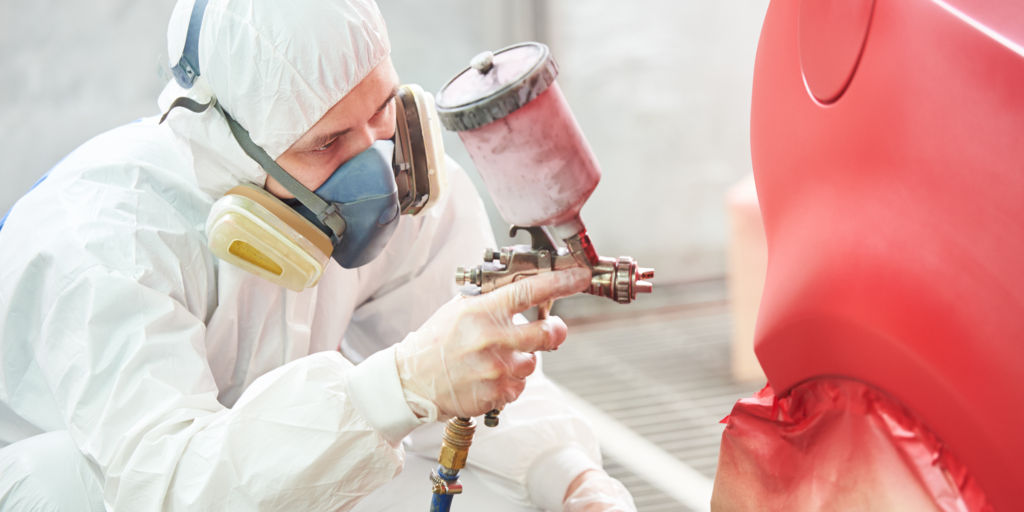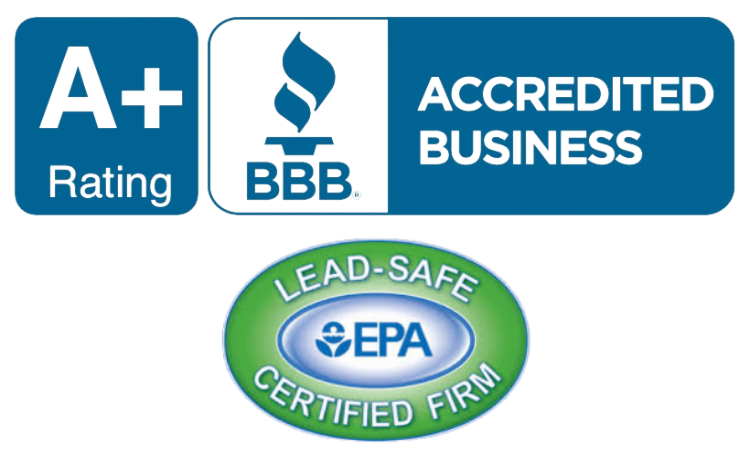It’s crucial to understand how these choices might affect your health and finish when painting. So, take your brush and DIY hat, and let’s begin! We will help you choose a paint option for your next project, whether you’re a pro or a beginner. Discover the intriguing world of VOCs and why no-VOC paint may be suitable for you.
What Are VOCs and How Do They Affect Health?
Volatile organic compounds (VOCs) are substances in paint and other household items. These substances are discharged into the air during and after painting, posing health concerns.
Many health issues have been connected to VOC exposure. Eye, nose, and throat irritation, headaches, dizziness, and nausea might result from short-term exposure. Repeated exposure can damage the liver, kidneys, or central nervous system. Some VOCs are carcinogenic.

VOCs’ impact on indoor air quality is relevant because most individuals spend a lot of time indoors. High quantities of these substances can worsen asthma and allergy symptoms and lower indoor air quality.
No-VOC paint considerably reduces the health risks of regular paints. No-VOC paint contains less volatile organic compounds (usually less than 5 grams per liter) than traditional paints (up to 150 grams).
Benefits of Using No-VOC Paint
Zero VOC or low VOC paint has many advantages over standard paints that contain volatile organic compounds. It’s healthy for you, your family, and the environment due to these benefits.
Indoor air quality is a major benefit of no-VOC paint. Off-gassing from traditional paints releases hazardous substances. Respiratory troubles, headaches, and other health complications can result. No-VOC paint avoids hazardous emissions, making it safer for occupants and painters.
No-VOC paint is also greener. Regular paint manufacturing and discharge pollute the air and water. You reduce your carbon footprint and ecosystem damage by choosing no-VOC products.
People also like that no-VOC paints smell less. You won’t have to tolerate unpleasant chemical scents during application or drying with low- or zero-VOC paints.
Quality and color choices aren’t compromised with no-VOC paints. Numerous businesses now provide a wide choice of eco-friendly hues so you can achieve your preferred aesthetic without harming your health or the environment.
Drawbacks of Using VOC Paint
Although VOC paints have been widely used for years, they have certain downsides. Indoor air quality is a major concern. Paint drying releases VOCs, which can pollute indoor air, especially in poorly ventilated environments.
In addition to air quality, VOC paints can harm health. These substances can cause headaches, respiratory difficulties, asthma, and cancer. Paint fume VOCs are especially damaging over time.
Another problem of VOC paints is their environmental impact. VOCs generated during painting or cleaning or stripping add to outdoor air pollution and smog. Human health, ecology, and climate change are affected.

Traditional paints with VOCs also smell stronger than no-VOC options, which some people find unpleasant. This pungent stench might remain for days or weeks after painting, causing discomfort or irritation.
Traditional VOC paints dry slower than non-VOC paints, so they may not be right for you if you need rapid results and fast drying.
Choosing the Right Type of Paint for Your Project
Choosing the correct paint for your project is vital to success. Knowing the differences between VOC and non-VOC paints might help you choose one for a room, furniture, or outdoor surface.
VOC paint can leak toxic chemicals into the air during and after application. These chemicals can cause respiratory difficulties, headaches, and dizziness. However, no-VOC paint is safer for indoor and outdoor usage since it lacks these compounds.
Choose paint based on endurance and finish. Both VOC and no-VOC paints have matte, satin, or gloss finishes. Determine your demands based on the surface being painted; certain paints are meant for wood or metal.
Color selection is crucial when choosing paint. Both varieties offer a wide selection of colors, however no-VOC paints may include minor levels of VOCs from pigments. If you have chemical sensitivity or color preferences, consult professionals or read product labels.
Tips for Painting with No-VOC Paint
Tips for painting with no-VOC paint can assist in ensuring success. Preparation is paramount. Just like any other painting job, clean the surface well before painting. A smoother finish and greater paint adhesion will follow.
Another tip: use good brushes and rollers. Good tools are essential for professional-looking no-VOC paints due to their slightly different characteristics.
Apply paint slowly. Despite drying quickly, no-VOC paints should not be rushed. Apply thin coats of paint and let them dry between coats for best results.
Before undertaking a major project or needing numerous cans of no-VOC paint, mix them. This maintains project color uniformity.
Remember ventilation! No-VOC paints are low-emitting, although excellent ventilation is still needed when painting. To circulate fresh air, open windows or utilize fans.
You’ll be ready for a healthy, environmentally friendly painting experience with these simple no-VOC paint recommendations!
Conclusion
Choosing the correct paint for your project is crucial for a beautiful finish and a healthy interior atmosphere. VOC and non-VOC paints serve distinct purposes.
VOC paints are frequently used yet can cause health problems owing to their airborne constituents. These volatile organic chemicals pollute the air and cause respiratory problems. No-VOC paints are safer since they contain fewer chemicals.
Benefit-wise, no VOC paint wins. It minimizes odors during application and drying and enhances interior air quality. Those allergic to strong chemical odors should use no-VOC paint. VOC paints may offer greater color options and durability, but their health risks outweigh these benefits. No-VOC paint gives you peace of mind that it won’t harm you.
Choose no-VOC paint for health and environmental reasons. This paint lets you create beautiful interiors without the hazards of VOC-containing chemicals. Make the switch—your lungs will thank you!

